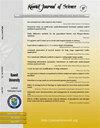Intelligent chlorination in water distribution networks: Integrating genetic algorithm and EPANET fusion
IF 1.2
4区 综合性期刊
Q3 MULTIDISCIPLINARY SCIENCES
引用次数: 0
Abstract
The primary goal of chlorination, a chemical treatment process employed in water distribution networks (WDNs), is to safeguard public health by disinfecting potable water. This research delves into the hydraulic and qualitative analysis of WDNs in the Golestan district of Ahwaz city, Iran, utilizing a demand-based methodology integrating genetic algorithm (GA) and Environmental Protection Agency Network Evaluation Tool (EPANET) simulation software. The investigation incorporates varied concentrations of booster chlorination, and a re-qualitative analysis is subsequently performed. Three distinct scenarios, each employing one, two, and three booster pumps, are conceptualized. A quality performance indicator is developed to enhance comprehension and facilitate a comprehensive water assessment. To optimize the quality performance index (QPI), the GA is employed with an objective function, i.e., determining the most effective placement of chlorine injection pumps. The results reveal that the network performance index achieved percentages of 78 %, 78 %, and 80 % across the three scenarios. Moreover, the water quality in the second and third scenarios attains notably high acceptability levels, highlighting the efficacy of the proposed chlorination strategy.
配水管网智能氯化:融合遗传算法和EPANET融合
氯化是配水网络(WDNs)中采用的一种化学处理过程,其主要目标是通过对饮用水进行消毒来保障公众健康。本研究利用基于需求的方法,结合遗传算法(GA)和环境保护机构网络评估工具(EPANET)仿真软件,深入研究了伊朗阿瓦士市Golestan地区的供水管网的水力和定性分析。调查纳入了不同浓度的加强氯化,并随后进行了重新定性分析。三个不同的方案,每个采用一个,两个和三个增压泵,概念化。制定了水质表现指标,以加强理解和促进全面的水评估。为了优化质量性能指数(QPI),将遗传算法与目标函数结合,即确定最有效的注氯泵位置。结果显示,网络性能指数在三种场景中分别达到了78%、78%和80%的百分比。此外,第二和第三种情况下的水质达到了非常高的可接受水平,突出了拟议的氯化策略的有效性。
本文章由计算机程序翻译,如有差异,请以英文原文为准。
求助全文
约1分钟内获得全文
求助全文
来源期刊

Kuwait Journal of Science
MULTIDISCIPLINARY SCIENCES-
CiteScore
1.60
自引率
28.60%
发文量
132
期刊介绍:
Kuwait Journal of Science (KJS) is indexed and abstracted by major publishing houses such as Chemical Abstract, Science Citation Index, Current contents, Mathematics Abstract, Micribiological Abstracts etc. KJS publishes peer-review articles in various fields of Science including Mathematics, Computer Science, Physics, Statistics, Biology, Chemistry and Earth & Environmental Sciences. In addition, it also aims to bring the results of scientific research carried out under a variety of intellectual traditions and organizations to the attention of specialized scholarly readership. As such, the publisher expects the submission of original manuscripts which contain analysis and solutions about important theoretical, empirical and normative issues.
 求助内容:
求助内容: 应助结果提醒方式:
应助结果提醒方式:


